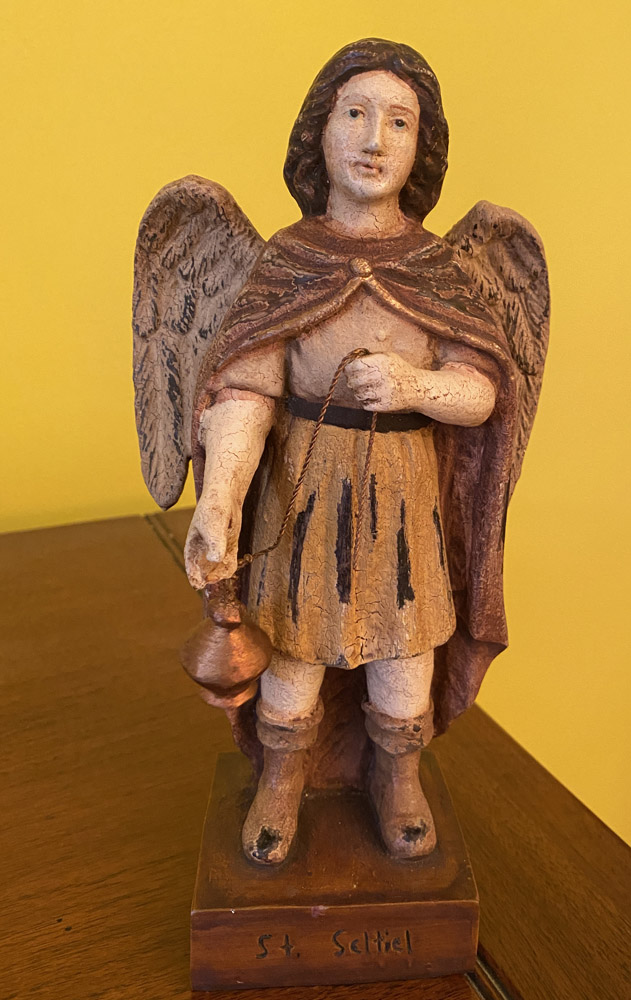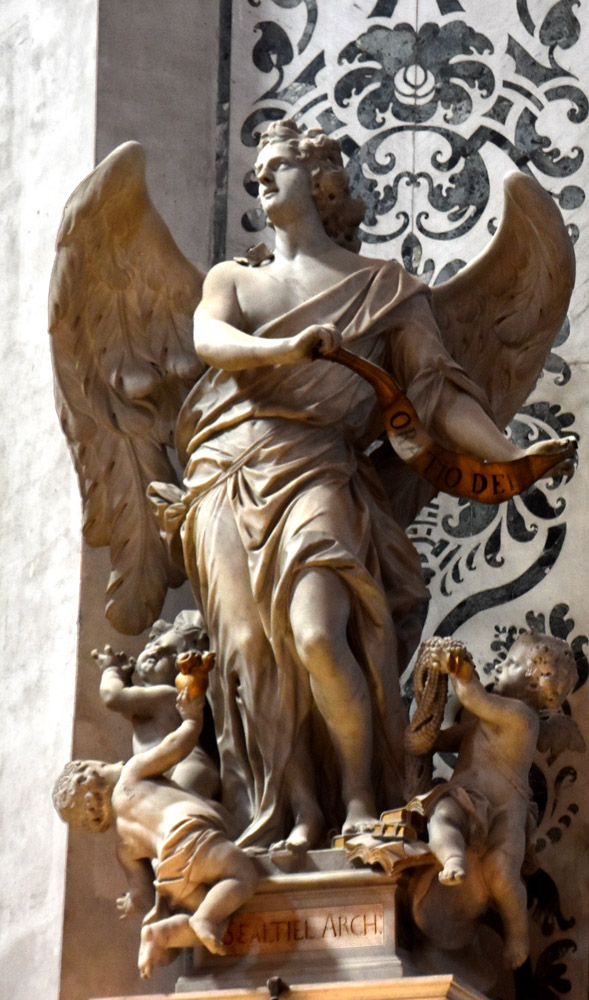According to his Wikipedia article, Sealtiel is believed by some to be the angel in Revelation 8:3 who "stood before the altar, having a golden thurible, a censer hanging from a chain so it can be swung and there was given to him much incense, that he should offer of the prayers of all saints upon the golden altar, which is before the throne of God." This identification is reflected in images of Sealtiel, where his attribute is a thurible, a censer hanging from a chain so it can be swung as in the first picture at right.
In the second picture at right Sealtiel holds a banderole with the Latin words oratio dei, "prayer of God." This is the meaning of his name in Hebrew.
Prepared in 2021 by Richard Stracke, Emeritus Professor of English, Augusta University.

A Mexican statuette of St. Sealtiel with a thurible – a censer hanging from a chain. (See the description page.)

A monumental statue of St. Stealtiel in a Venetian church. (See the description page.)
ATTRIBUTE
- Thurible (a censer on a chain)
VARIANT SPELLINGS
- "Selaphiel" is the headname in Wikipedia.
- "Salathiel" in Malan's translation.
NOTES
1 The Conflict of Adam and Eve, I, xxxi, in Malan, 33).